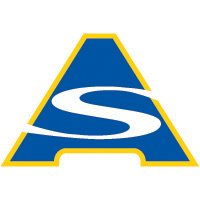What do they do?
Lay and bind building materials, such as brick, structural tile, concrete block, cinder block, glass block, and terra-cotta block, with mortar and other substances, to construct or repair walls, partitions, arches, sewers, and other structures.
Also known as:
Block Layer, Block Mason, Blockmason, Brick and Block Mason, Brick Layer, Brick Mason, Bricklayer, Concrete Finisher, Mason, Masonry Installer, Tender
-
-4.6%
Change
Ranks #53 in job growth rate300Job Openings
Ranks #9 in net job growth
-
J F Ingram State Technical College
Deatsville, AL
-
Williamson College of the Trades
Media, PA
-
-
Coahoma Community College
Clarksdale, MS
-
Ivy Tech Community College
Indianapolis, IN
Looking for colleges that offer a specific major? Use the College Match Tool to find your best-matched schools and discover your estimated Net Price!
- Doctorate or Professional Degree (<1%)
- Master's degree (<1%)
- Bachelor's degree (3%)
- Associate's degree (3%)
- Some college, no degree (14%)
- High school diploma equivalent (45%)
- Less than high school diploma (34%)
People in this career often know a lot about:
- Building and Construction - Knowledge of materials, methods, and the tools involved in the construction or repair of houses, buildings, or other structures such as highways and roads.
- Mathematics - Knowledge of arithmetic, algebra, geometry, calculus, statistics, and their applications.
People in this career often have talent in:
- Trunk Strength - The ability to use your abdominal and lower back muscles to support part of the body repeatedly or continuously over time without "giving out" or fatiguing.
- Extent Flexibility - The ability to bend, stretch, twist, or reach with your body, arms, and/or legs.
- Arm-Hand Steadiness - The ability to keep your hand and arm steady while moving your arm or while holding your arm and hand in one position.
- Manual Dexterity - The ability to quickly move your hand, your hand together with your arm, or your two hands to grasp, manipulate, or assemble objects.
- Static Strength - The ability to exert maximum muscle force to lift, push, pull, or carry objects.
- Near Vision - The ability to see details at close range (within a few feet of the observer).
- Visualization - The ability to imagine how something will look after it is moved around or when its parts are moved or rearranged.
- Multilimb Coordination - The ability to coordinate two or more limbs (for example, two arms, two legs, or one leg and one arm) while sitting, standing, or lying down. It does not involve performing the activities while the whole body is in motion.
- Dynamic Strength - The ability to exert muscle force repeatedly or continuously over time. This involves muscular endurance and resistance to muscle fatigue.
People in this career often do these activities:
- Measure materials or objects for installation or assembly.
- Mark reference points on construction materials.
- Install masonry materials.
- Apply mortar.
- Plan layout of construction, installation, or repairs.
- Cut tile, stone, or other masonry materials.
- Review blueprints or specifications to determine work requirements.
- Estimate materials requirements for projects.
- Remove excess materials from finished construction projects.
- Clean surfaces in preparation for work activities.
- Inspect work sites to determine condition or necessary repairs.
- Mix substances or compounds needed for work activities.
- Align masonry materials.
- Remove worn, damaged or outdated materials from work areas.
- Apply sealants or other protective coatings.
This page includes data from:

 Occupation statistics: USDOL U.S. Bureau of Labor Statistics Occupational Employment Statistics
Occupation statistics: USDOL U.S. Bureau of Labor Statistics Occupational Employment Statistics






